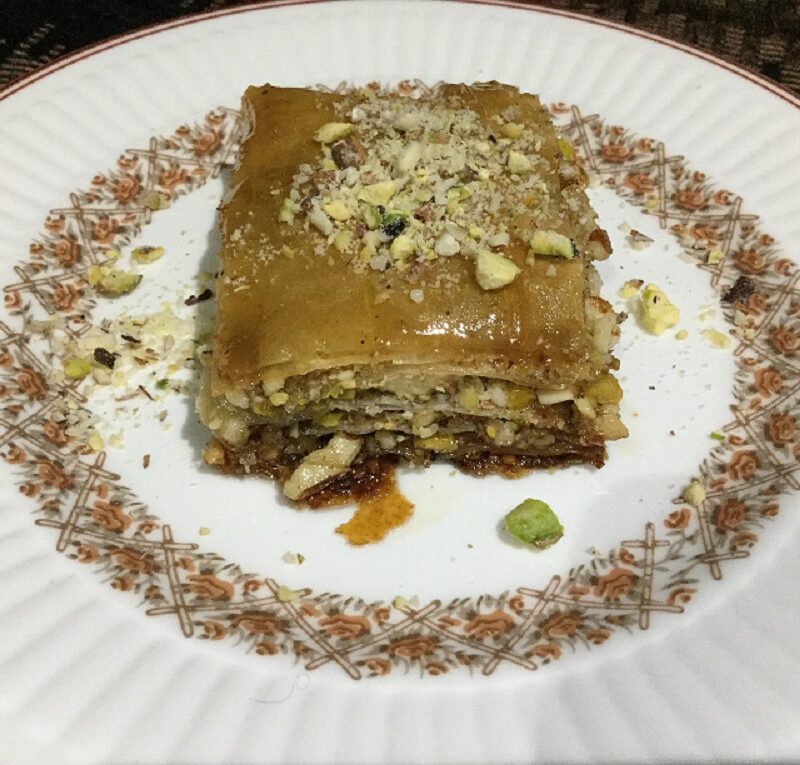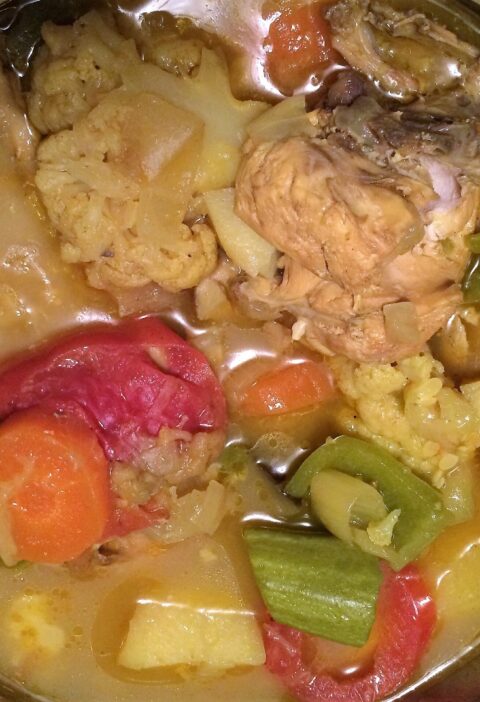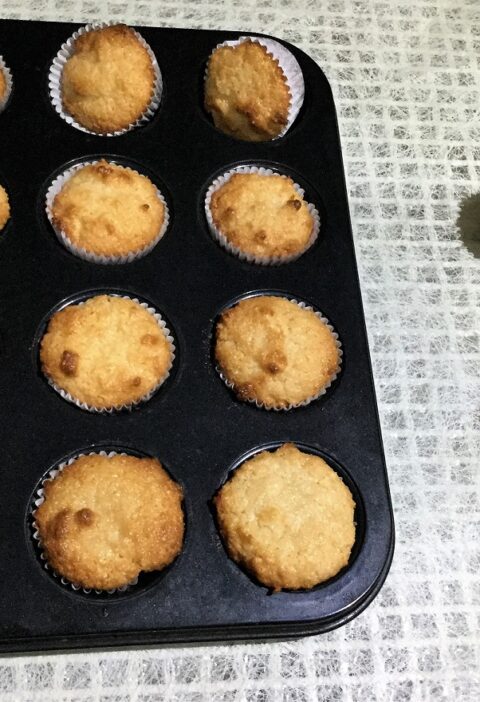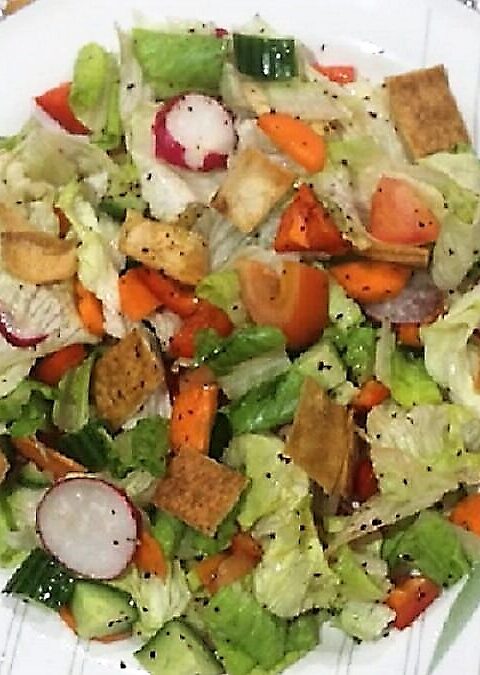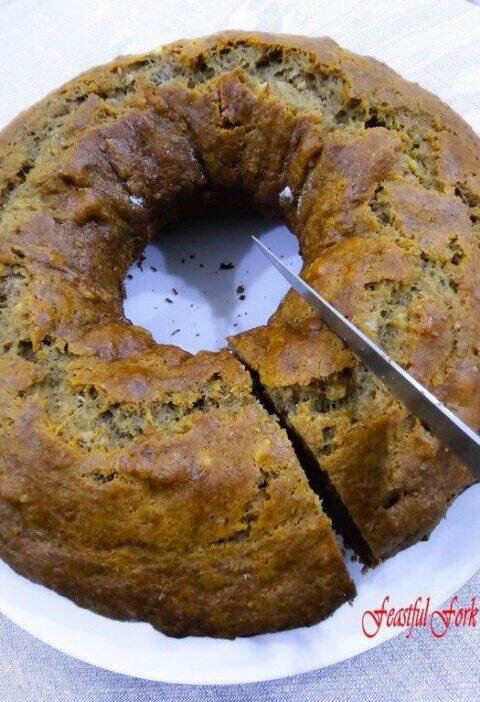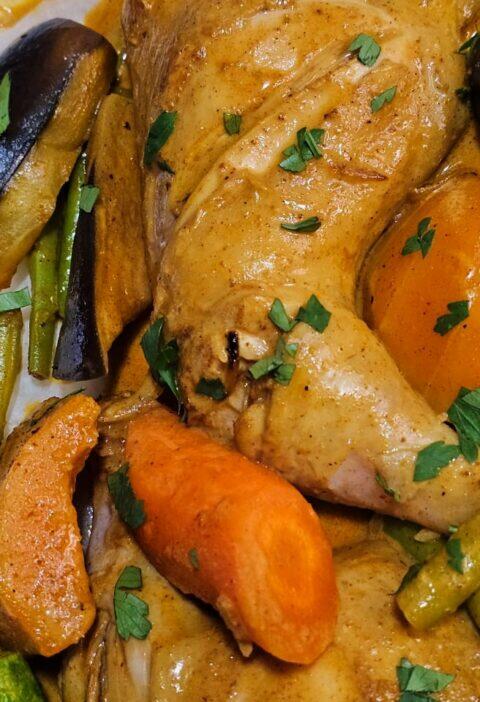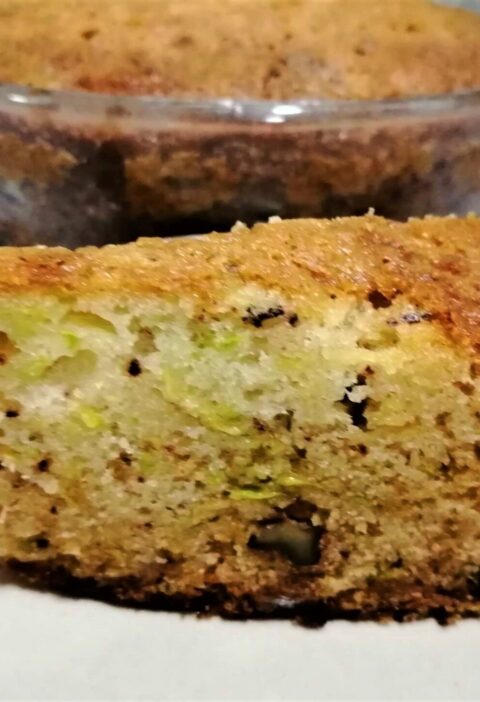Baklava – Love at First Bite
One of my favorite sweet stuff is baklava! My taste buds, mind, heart and soul fell in love with this on first bite. But unlike first love, where we seem to remember everything, this is quite the opposite: I remember only two things: It’s sweet and I love it.
Did I give up my love for baklava?
The first time I tried making this dish – I remember this too well – I gave it up even before the poor thing reaches the oven! And I gave up using phyllo pastry altogether. I was not sure if my hands were quite incompetent, or my brains were somewhere else; probably my taste buds were too excited, but I remember the frustration of not being able to prove my love for it. Young and impatient – that’s why! Hey, I only gave up making the baklava, as I continued to love it! At that point, the choices were to either buy them or enjoy them in parties or friends’ houses. I did both alternatively! Then of course, I was young and I had a sweet tooth. That should justifiy all of those acts, LOL!
Learning the art of making baklava
A couple of years later (still young then), I tried working on phyllo pastry and baklava another time. Why wouldn’t I, didn’t I say I haven’t given it up. I had, then, learned that patience is one of the ingredients in anything lovely – this must be first on the list, at least for me. Succesful! Whoaaa! Glorious!
Take it from me… I mean, the making of my favorite sweets
So, if you ever got a feeling that this is not easy to make, I don’t blame you. Being at that position once before; really, just one time, I know. Now, I can guarantee you that you need to only try it once (patience necessary on the first attempt, please), and you would find working on it joyful! And of course, consuming it is doubly joyful!
Where does baklava go?
You can enjoy it with family and friends, take it to potluck get-together or simply have it with tea, which is ooooh-so-nice. By the way, baklava is known to be of Greek origin (Wikipedia). Though not documented, it was historically also used as a gift by the Turks during the months of Ramadan. There are varied versions of this sweet dish in different parts of the Middle East: honey is used as one of its ingredients. However, I did not use honey here as what I would show you is more basic.
It is also commonly prepared in bigger pans and cut in such smaller bite-size pieces in squarish or diamond shapes.Using hazelnuts, pistachios and almonds, or a combination of two or more, the nutty bite gives it soul. Some use rosewater or orange water to provide additional tease in the taste. There is, therefore, many ways in how this dish is done, so you could never be wrong – isn’t that fantastic and an inspiration good enough for you to want to try this? Well, for those who are already addicted to this and has not tried making it at home, this is the time.
Let’s see the light…
Let me show you here how I make this dish. My version is lighter than most. I did cut the sugar because it still works well even with almost half its suggested amount in many recipes available. Other than the reason that my sweet tooth is not actually very, very sweet, you would agree that it is healthier (if sweets are ever healthy) to cut down sugar if can be done – more often than not, it can be done, like here.
Confession: I am not the only one in love with this; not the only one with the sweet tooth, shall I say? My hubby is. I have yet to ask him if my version had an influence in that addiction. Friends ask for this whenever I go to my home country. I know of at least two who had tried baking them at home.
Oh, before I forget, I have another recipe here. This one does not use the phyllo pastry (aahooo-hoo) but what is called “kunafa” – that hair-strand looking or noodly pastry. It replaces the phyllo pastry and it comes out differently. You can try this as well. And you may want to let me know how it goes! I would love to hear your initial impatience, amf, your joy in the ability to have this available in your own kitchen anytime.
Cool? Let’s go!
Ingredients:
250g Phyllo pastry
½ cup icing sugar
2/3 cup pistachio nuts
2/3 cups almonds
1 cup butter softened
For the syrup:
1 cup white sugar
½ cup water
2 tbsp juice of fresh lemon
¼ tsp cinnamon powder
A pinch of clover powder (optional)
Instructions in making your best baklava:
Mix icing sugar and nuts in a bowl.

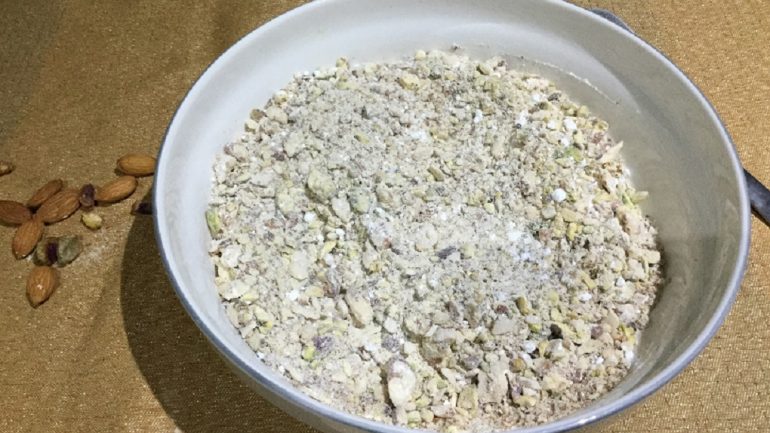
Cut phyllo pastry the same size as the baking pan you are using.
Place two sheets of phyllo pastry onto the pan.
Brush with butter.
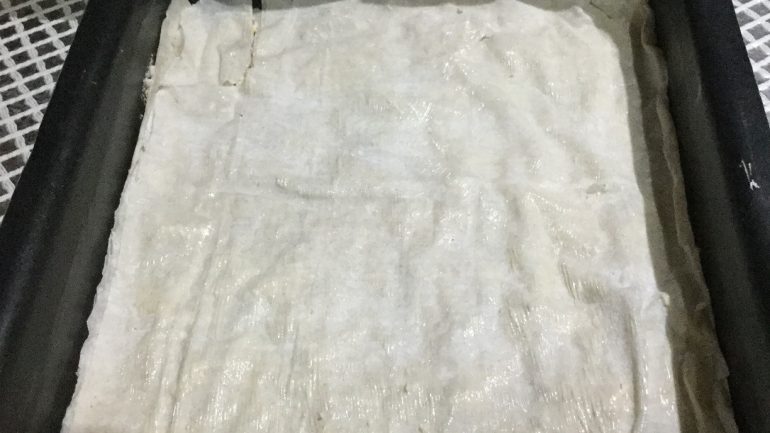
Sprinkle generously with nuts and sugar mixture.
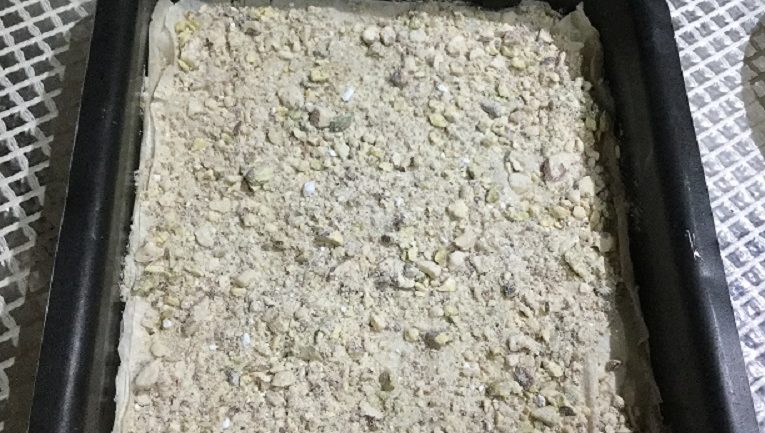
Cover with two sheets of phyllo pastry, brush with butter, sprinkle with nuts; then repeat the process ending with phyllo pastry and butter. Cut using a small knife to your desired sizes (you can be creative here).
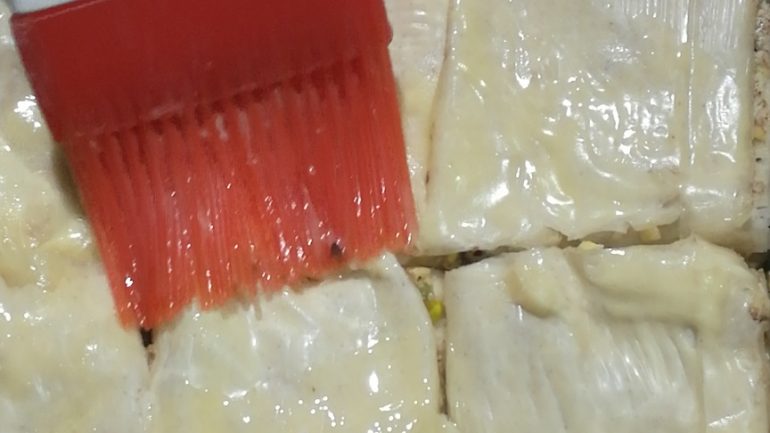
Bake at 350°F for 35 minutes.
While baklava is baking, prepare the syrup by bringing water and sugar to boil. Simmer for 10-15 minutes and add the rest of the ingredients. Let cool.
Pour cooled syrup onto hot baklava.

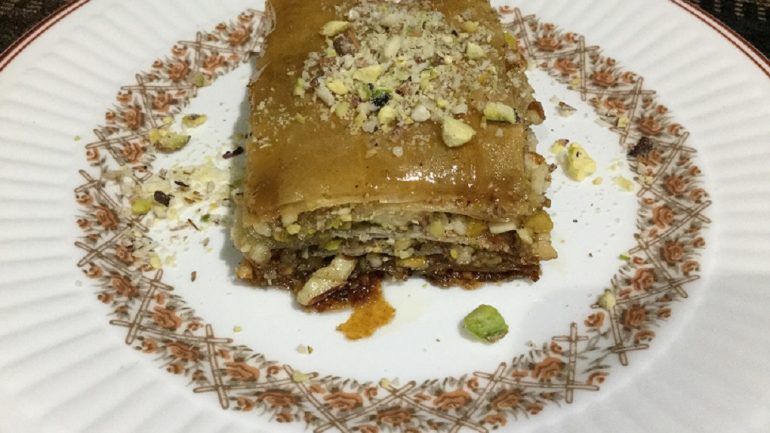
Enjoy.
Magida

